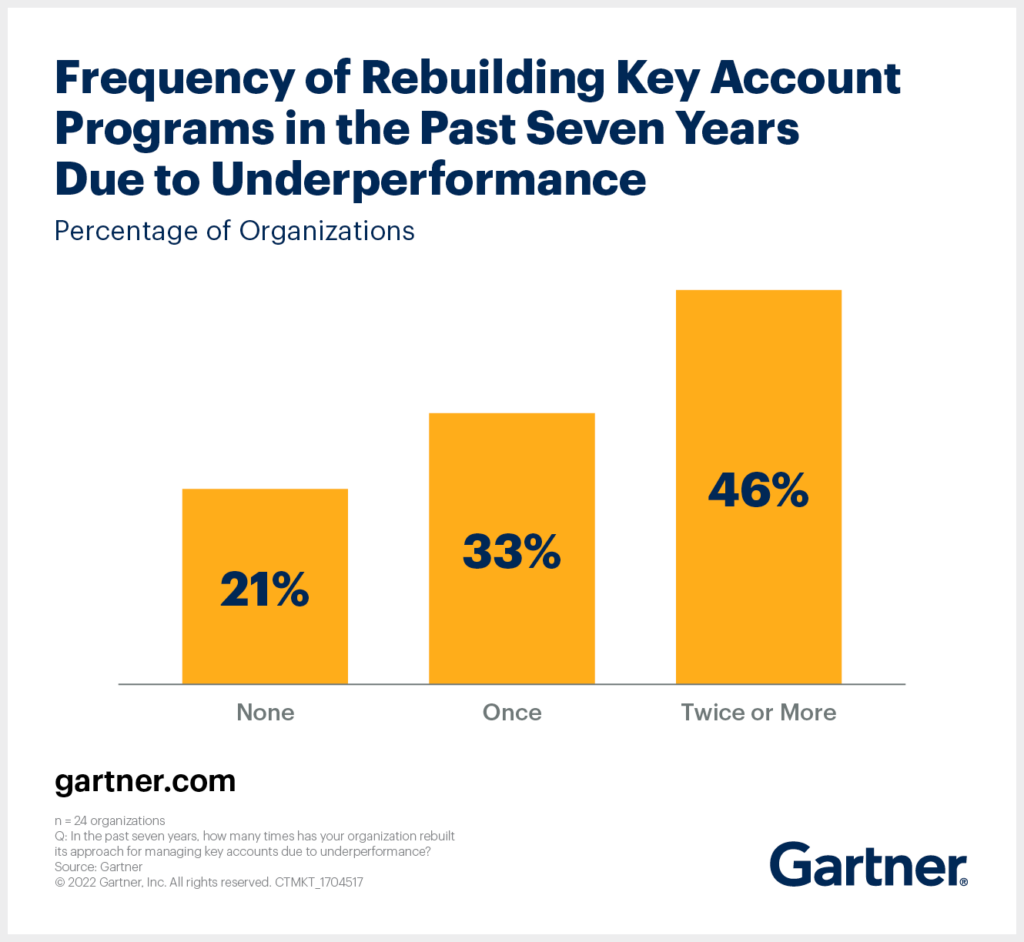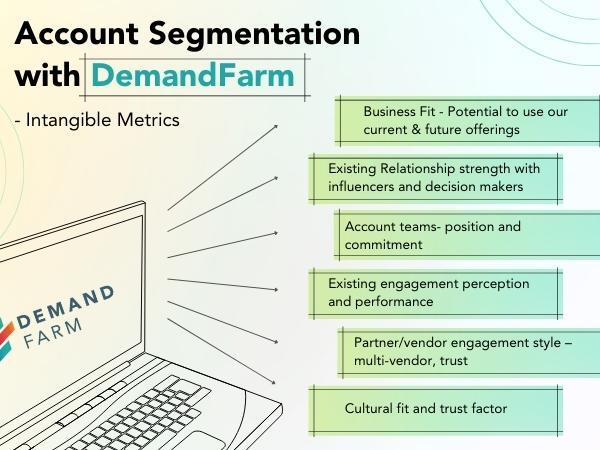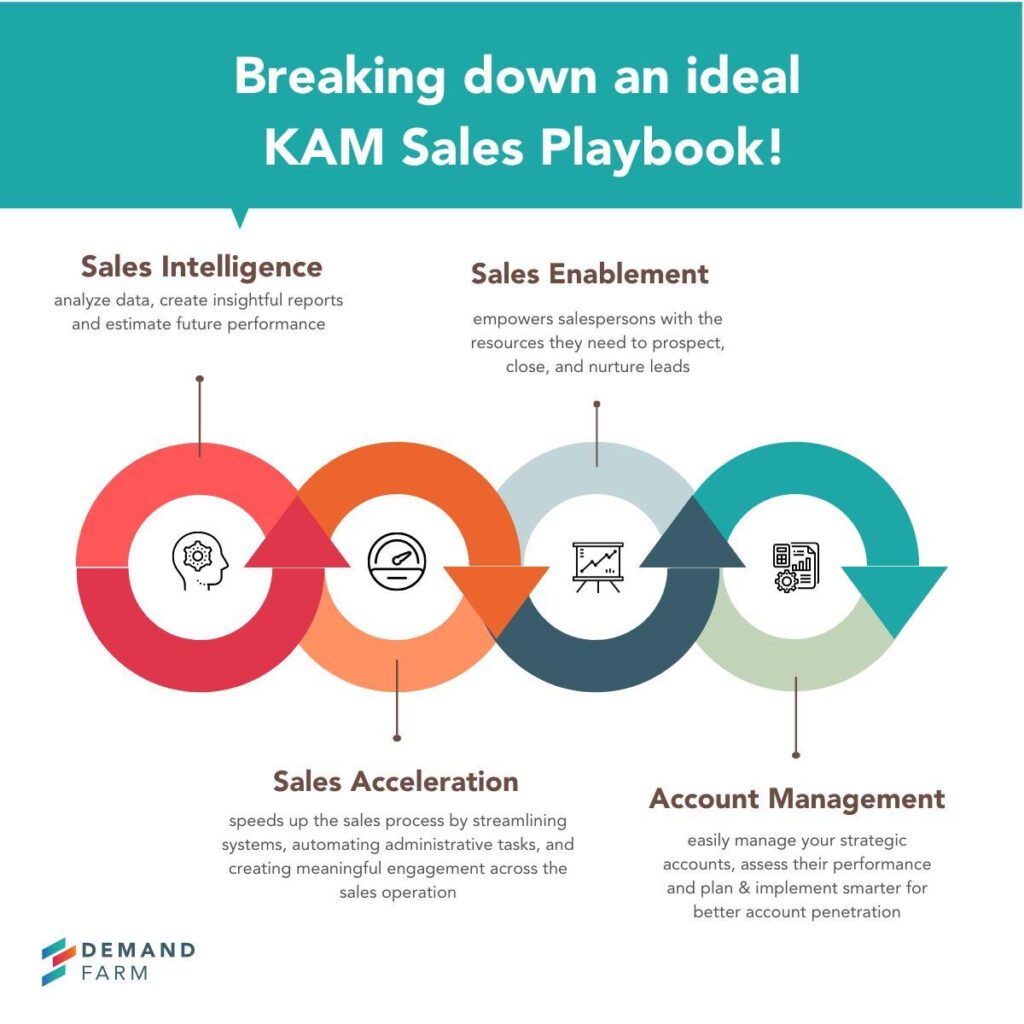A major portion of a company’s sales typically come from a small group of customers. Or, as the saying goes, around 80% of a company’s profit will come from 20% of its clients or accounts. We’ve all heard this management adage time and again. However, it continues to hold for many businesses around the world, no matter their size or the industry in which they operate.
That’s why it’s critical to have proper strategies in place to ensure you, as a company, manage 20% of your clients with extra care than you normally would. How do you do that? By strategizing and picking the best account management practices for your firm. But despite the best account managers, Key Account Management strategies and approaches are failing.
The main reasons behind a failed key account management strategy are a few critical mistakes that organizations tend to make. Those include a misguided selection of key accounts in the first place, overburdening key account managers, and wasting of resources, according to a study by Gartner published earlier this year. By resolving these issues, sales teams can greatly improve their key account growth, the study adds.

source: Gartner
What is Key Account Planning?
Key Account Planning or Strategic Account Planning is a business process that entirely deals with the administration of these strategic key accounts. The best way to administer key accounts is to nurture them into long-term relationships. Key accounts are not just those that are bringing in the most money to your company right now, but can also offer the most promising prospects for growth.
The Key Account Management process, in short, involves employing key account managers to maintain, develop and nurture those key accounts, and strategic customer relationships. It requires more in-depth and specialized handling than the role performed by the larger sales team. The popular saying is that in sales, you sell. But when it comes to Key Account Management, you help customers buy.
What are the benefits of Account Planning?
Key account planning offers a few important benefits for businesses, especially small and medium-sized ones, that make it a must-have. Account Planning is considered one of the most effective ways to both grow revenue and safeguard current sales. In other words, with Account Planning, in one stroke, an organization can protect its present while simultaneously working towards the future.
By using Account Planning strategies, your business gains opportunities to cross-sell and upsell additional products or services to existing customers. Can you do this without Account Planning? Perhaps. But it would be a haphazard process. Account Planning ensures that your key account managers or sales reps know exactly which products or services to pitch, and which existing client to pitch it to.
As we mentioned above, Account Planning also allows you to protect your existing customer base. It helps curb customer churn. When you use Account Planning strategies, your key account managers and sales rep are armed with the right tools. They can offer personalized solutions to customers who matter. In the process, what occurs is a mutually beneficial transaction between your organization and your key accounts.
How do you use key account planning in your business? In the rest of this article, we give you a starting point by examining four best account planning strategies that will benefit your organization.
Four Successful Key Account Management Strategies for Account Planning
1. Select the right key accounts
How do you identify your key accounts? That should be the first question that comes to your mind, before you can even think about what Key Account Management strategies you need to implement. Key accounts or strategic customers aren’t only the ones that are bringing you the largest chunk of revenue.
There are several other parameters that you need to consider before you can designate a client or customer as a key account. Here’s a look at some of those factors you need to consider to arrive at your own list of key accounts or strategic customers:
- Historic data: How much revenue has an account brought in over the years? How has its ratio of contribution to your company’s profits/revenue expanded (or shrunk) with time? Answering questions like these give you a more accurate and comprehensive description of key accounts in terms of revenue contribution.
- Growth potential: Now that you have an idea of how much revenue an account has historically contributed to, the next step is to map out its growth potential. How much more can your company earn from an account? Is there enough long-term potential? Do you believe that the organization is financially sound and will remain so for the foreseeable future?
- Value potential: Does the company offer you opportunities for growth that’s not necessarily based on numbers? For example, does the company have an extensive network or connections that you can tap into? Does it have access to resources you may need, or come with a stellar industry reputation that makes them a value add to your portfolio of customers?
- Match potential: Of course, it goes without saying that any account you are looking to classify as a key account must be a fit with your own company. For example, the solutions you currently offer (and plan to in future) must, obviously, be a match with what the other organization wants. Often, the culture of a strategic customer also ought to match your own, as it makes it easier to do business with them.

As you implement a selection strategy to identify your strategic customers or key accounts, it’s very important to remember not to go overboard. It may be tempting to create a large portfolio of key accounts under the assumption that it boosts your company’s credentials. But the process is meant to be a narrow, selective one.
You don’t want to end up with a long list of key accounts that may not be strategic for your company. When you do that, you run the risk of having to remove or demote some accounts, and that can cause unnecessary friction and possibly even the loss of a customer.
It is also important to remember that your largest customers should not automatically be considered your key accounts. To avoid the critical error of misguided account selection, which we mentioned at the beginning of this article, having a selection strategy in place is essential.
2. Pick the right resources
Any successful account management strategy will place a heavy emphasis on the kind of resources you need to use to achieve KAM goals. This includes human resources and technology. Let’s take a look at human resources before we move on to picking the right technology for your Account Planning.
Here are a few things you need to keep in mind while putting together a team of successful key account managers:
- You need a set of dedicated key account managers or strategic account managers (SAM) whose primary job function is to liaise with key accounts. Your sales rep cannot, and should not, double as your key account manager or strategic account manager. You need to identify, recruit, and create a team whose sole purpose is to keep those key account relationships intact, and grow them into bigger opportunities for your company.
- When you are recruiting key account managers or strategic account managers, it is important to remember that their skill sets are not going to be entirely the same as those on your sales team. Bringing in new customers or accounts is different from nurturing and building existing accounts.
- Key account managers should be able to communicate clearly, become an expert on your key client/clients, solve problems for them, educate them on how your company can solve their problems, be sensitive and empathetic to their needs, maintain high standards of credibility, and have the aptitude to call in reinforcements when required.
- One person may not be able to meet all the requirements of a successful key account manager. That’s why you need a dedicated team handling your KAM process. That should include various kinds of key account managers. For example, those that are experts at maximizing growth out of a key account, or those that can strengthen a relationship, those that can identify the best ways to get value out of a key account, those that can handle the entire project, and so on.
- Finally, there is a crucial business process that you need to establish even before your customer reaches the key account stage. The process of handing off key accounts post-sales to the KAM/SAM team has to be smooth. It sets the tone for your entire relationship with a key account, and you need to ensure you’re starting off on the right note.
Human resources aside, technology also plays a key role in ensuring smooth account planning and management so that you’re able to put together an effective KAM strategy and build a high performing team. DemandFarm’s specialized Key Account Management software is one such tool. It is designed to be integrated with your CRM, and is designed for data-driven, collaborative, scalable, on-demand Account Planning, and governance.

3. Build a customer-centric process
One of the major differences between regular sales strategy and Key Account Management strategy is the depth of understanding required of the customer. As a key account manager, you must become an expert on the key account or strategic customer you are assigned to manage. Here are a few points to bear in mind when it comes to building a customer-centric account management process:
- A key account manager or strategic account manager, as we mentioned above, must absolutely have in-depth and intimate knowledge of the customer.
- That should include, but not be limited to, details such as their products and solutions, marketplaces, and geographies they operate in, policy landscape, their peers and competition, their key strategies, major marketing campaigns and other initiatives, company culture, goals, market positioning, finances, future plans, and organizational structure.
- Another way of staying up to date on your customers is by regularly conducting SWOT analysis of their business.
- It is also important to be fully aware of all individual stakeholders within the strategic customer organization who will be involved in the purchase or use of your company’s products and solutions. Map it out by listing the names, titles, roles, responsibilities, and spheres of influence of all stakeholders.
- From that list, identify which of those stakeholders really matter to your company, which ones you need to strengthen ties with, which ones you could perhaps devote less energy to, which ones are most likely to cause challenges to your goals, and which ones are sympathetic to your cause.
It is not just enough to know your customer as intimately as you can. You need to be similarly clear, and well-versed in what you are looking to achieve from that particular strategic customer or key account. Some of the questions you could address to arrive at successfully strategizing for this include:
- How much is the account currently generating?
- What is its full potential, based on current market and company conditions?
- What are your short, mid, and long-term goals for the account?
- How satisfied is the customer with their existing use of your products and solutions?
- If they are unhappy with something, how can your KAM/SAM process help solve that for them?
- Are there additional gaps in your company’s product or solution that could fit?
- What do you need to do to fill those gaps, i.e., generate more business from that particular account?
4. Solve, don’t sell
This crucial strategy links back to what we said earlier in this guide about how it is important to distinguish between your sales team and your KAM team in terms of skill sets. Your sales rep’s job may be to get new accounts and customers. Sometimes getting potential customers to give you time (or lend you an ear) means you have to be persistent, and maybe even aggressive, to try and make a mark.
On the other hand, adopting an extremely active or aggressive approach with a key account or strategic customer may backfire. It could sour relations that have taken a long time to build, jeopardize your chances at expanding business generated from that account in the future, and could even hurt current revenue and profit performance. That is why you need KAMs/SAMs who understand that their main job function is not really to sell, but to solve problems for strategic customers and key accounts. According to a recent Gallup poll, “40% of B2B customers who are very satisfied with their account manager are fully engaged. This figure drops to 13% if they are not very satisfied.”
The key accounts are most likely customers who are as aware of your company’s products and solutions as you are of their business. This means that hard selling probably won’t work. What will work is extremely tailored solutions. KAMs and SAMs should be focusing on customizing your company’s products and solutions as much as possible to keep strategic customers happy and earn more from their accounts.
When it comes to strategic customers, successful account management strategies indicate that you need to sometimes play the role of a consultant rather than a salesperson. Your job is to help the client find value, and not just sell products to them. Sometimes the clients themselves will come to you with a requirement for additional products or solutions. But, with KAM, the job of an account manager is to also create those opportunities whenever possible. All this circles back to the mantra of this section: solve, don’t sell.
Conclusion
Key Account Management is not a simple and breezy task. It is complicated, involves a lot of effort, is dynamic and ever-changing, and requires specialized resources to successfully implement. But having a KAM process and a dedicated team in place can be beneficial in a B2B sales environment. It helps boost revenue, profitability, client retention and loyalty, customer satisfaction, and is a definite value add. The requirements for a successful key account management process may seem tall. Yet, it’s a necessary tool that just makes it much easier, smoother, and more sustainable for you to run a business in the long run.
 On-Demand Webinar: Unfiltered take on AI in Account Planning: Meet DemandFarm’s KAM AI
On-Demand Webinar: Unfiltered take on AI in Account Planning: Meet DemandFarm’s KAM AI 


